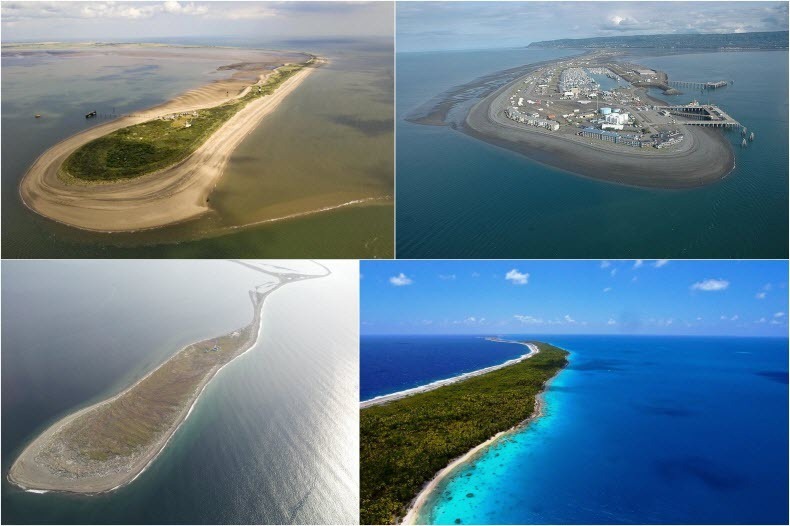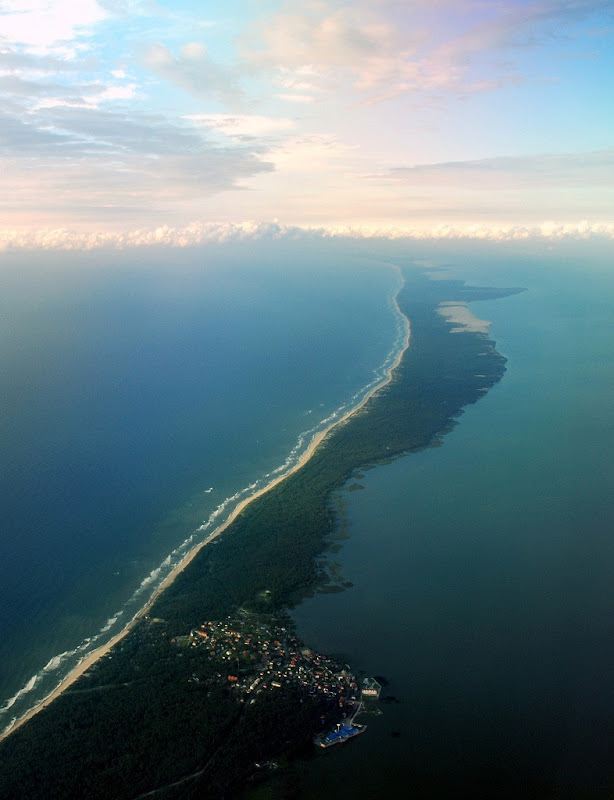In geography, spit is a landform made by the deposition of sand by the movement of tides.
As a spit grows, it might become stable and fertile and even support habitation.
Here are some spectacular and scenic spits around the world.

On the tip is an enlarged head wherein lies a disused lighthouse and a lifeboat station.
Spurn Head covers 280 acres and composed of sand and shingle banks held together by Marram grass and Seabuckthorn.
Spurn Point is a nice place for birdwatchers there are even accommodation for overnight stay.

On a good autumn morning one can see 15,000 birds fly past with 3,000 quite normal.
The southern side, that which faces Golden Bay is more stable and largely covered with vegetation.
The Spit is administered by the New Zealand Department of Conservation as a sea bird and wild life reserve.

There is a lighthouse at the end of the spit which you could visit.
NASA satellite image of Farewell Spit.
The spit is very young and was created by sedimentation processes around 11001200 AD.

The rural population amounted to some 235 people whose occupation was mostly fishery, farming and salt production.
About 24,000 tonnes of salt were produced every year during the 9th century on the Arabat Spit alone.
Around the 17th century, the Turkish army built a fortress to guard the spit and Crimea from invasions.
The Arabat Fortress still stands on the southernmost part of Arabat Spit.
It encloses a body of water called Dungeness Bay.
It is the longest natural sand spit in the United States.
The Dungeness Spit is entirely within the Dungeness National Wildlife Refuge and home of the Dungeness Lighthouse.
The Curonian Spit is home to the highest drifting sand dunes in Europe.
Their average height is 35 meters, but some attain the height of 60 meters.
The spit is frequently visited by migratory waterfowl.
La Manga sandbar is cut off by natural channels that keep the two seas in contact with each other.
Today, La Manga is densely populated.
The spit was inhabited by early natives who probably camped out there.
A more permanent habitation grew up much later with the arrival of Americans.
Hundreds of eagles gathered there in winter.






















